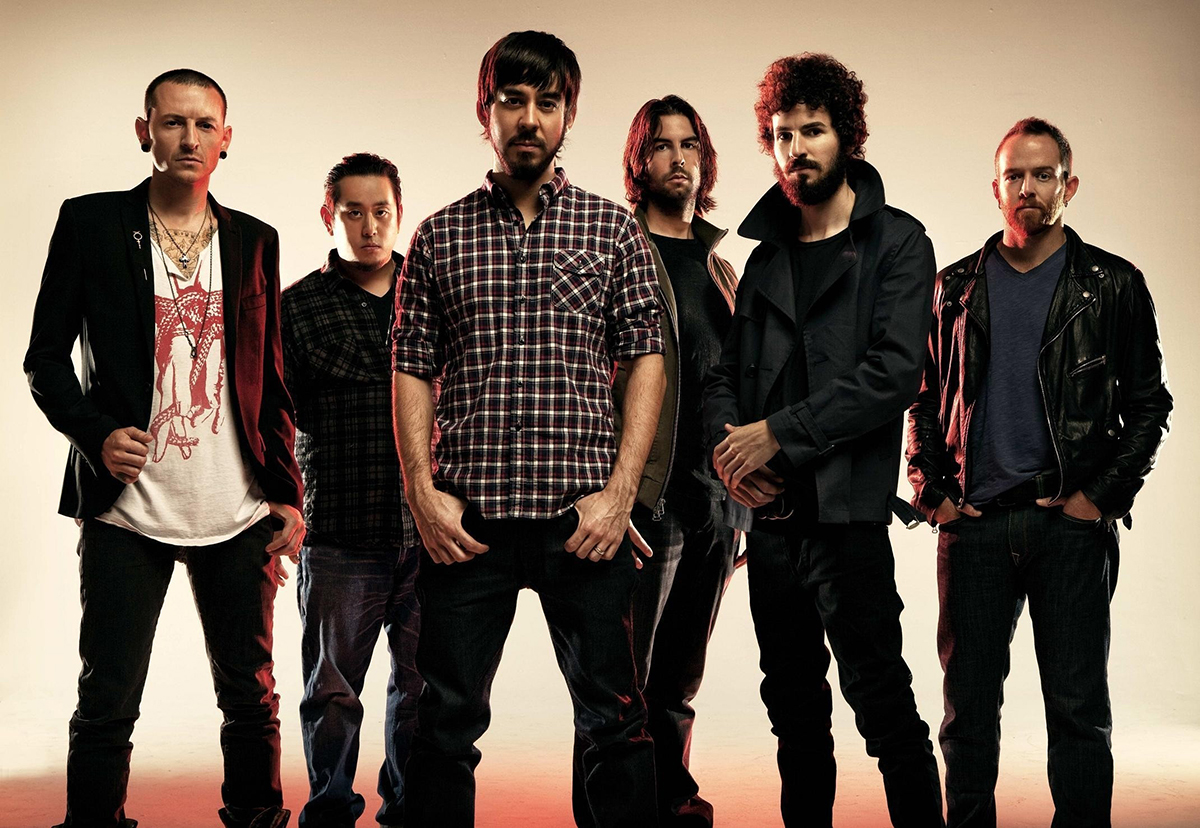INTERVIEW: Ever-evolving Linkin Park here for the long run

Linkin Park, courtesy.
This story originally appeared in the Oakland Tribune.
Linkin Park emerged at the tail end of the nu metal and rap-rock music scene in 2000. But while bands like Korn and Limp Bizkit have gone the way of the dinosaur, Linkin Park began to evolve its sound and continued making top-selling albums and selling out tours.
Linkin Park, The Prodigy
7:30 p.m., Tuesday
HP Pavilion
Tickets: $42-$73.
After transitioning from the genre that made them famous – a hip-hop/metal hybrid – to a more alternative rock sound, the band’s newest album, 2010’s “A Thousand Suns,” features a prominent electronica landscape.
The SoCal band, which performs Tuesday at the HP Pavilion in San Jose, has had to learn new instruments and sound effects to manufacture some of the electronic and industrial sounds heard on the album.
“I push more buttons and turn more knobs,” band co-founder and lead guitarist Brad Delson chuckled in a recent interview. “I think it’s forced us each to play instruments during some part of the show that are not what we’re necessarily most trained on, and ultimately for me that’s made it really fun. It diversifies my output onstage. I’m not just playing guitar. On one song I play drums and I sing.”
The sextet, which, besides Delson includes vocalists Mike Shinoda and Chester Bennington, bassist David “Phoenix” Farrell, drummer Rob Bourdon and Joe Hahn on turntables, first formed in 1996. High school friends Delson, Shinoda and Bourdon invited three others, including Hahn and Farrell, to jam together. After several years, Bennington was recruited to replace the lead singer who left.
Featuring a unique interaction with Bennington as singer and Shinoda as rapper, Linkin Park’s debut, 2000’s “Hybrid Theory,” sold more than 10 million copies. The band’s popularity continued to soar with its 2003 follow-up, “Meteora.” While the band continued to stick with the nu metal style, it also expanded into more alternative territory. Following several years during which the band members worked on side projects and remix albums, a third studio record was released in 2007. Like its predecessors, “Minutes to Midnight” also took the top spot on several Billboard charts.
“I would say there was a substantive break in style and sound with ‘Minutes to Midnight,’ ” Delson said. “We were at a point where we wanted to venture outside of the sound of our first two records, which have something sonically in common. (Producer) Rick (Rubin) was eager to encourage us outside of any preconceived ideas of what we could or couldn’t do as a group. And so I think that ‘Minutes to Midnight’ was an incredibly eclectic record with a lot of different styles.”
Linkin Park brought Rubin back for “A Thousand Suns,” which Delson described as an album made to be listened to as a whole, rather than individual songs in a random order. Yet the band’s goal was to make each song eclectic and unique.
“If you were decorating a room, you wouldn’t just want to go necessarily to a superstore and fill it with that stuff,” he said. “Maybe the most interesting physical space would have a collection of items that you made or found or gleaned over time from many different places. We try to do that within each song.”
The end result was some of the most melodic – yet industrial-sounding – output for the band. Think Nine Inch Nails meets Coldplay. Some of those electronic and industrial sounds were difficult to duplicate onstage.
“There was a very challenging period after we finished the record in rehearsals where we had to almost rediscover how to perform those things live,” Delson said. “But what’s exciting about a live show is seeing the band create the sound. Ultimately, once we figured those things out, I think we’ve grown as a band.”
Follow editor Roman Gokhman at Twitter.com/RomiTheWriter.
